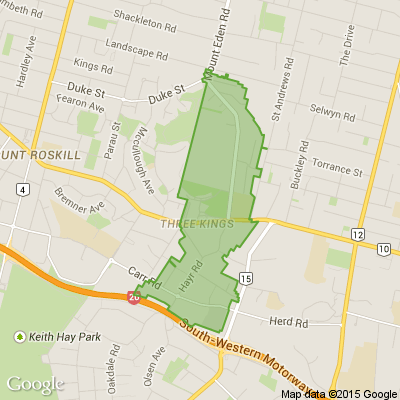Matariki: The what, why and where to know for this Friday
Matariki is quickly approaching, so what are the rules of the relatively new public holiday and why do we celebrate it?
=============================================
The Te Kāhui o Matariki Public Holiday Act 2022 came into effect in April 2022, establishing the day as a public holiday, the first of its kind to recognise Te Ao Māori.
Similar to Easter, the date of the Matariki public holiday changes from year to year, however, it will always be in June or July. The dates for the next 30 years are already set out in legislation. It will always fall on a Friday.
This year it is this Friday, June 14, next year it is on June 28.
Why do we celebrate Matariki?
=========================
Matariki occurs when the star cluster is made visible mid-winter and heralds the beginning of Te Mātahi o te Tau, the Māori New Year.
“Matariki” is an abbreviation for “Ngā mata o te ariki o Tāwhirimātea”, or “the eyes of the god Tāwhirimātea” and each of the stars holds a unique purpose.
It is said Rehua (Antares) took Matariki as a wife, and the stars represent their eight children, each with a defined role in ao Māori.
The constellation is momentous in many different cultures and religions, it is mentioned in the Koran, the Talmud, and the Bible. It is known as the Seven Sisters in Greece, Krittika in India, Subaru in Japan and Freyja’s Hens in Scandinavia.
Māori iwi have been celebrating Matariki for many, many years, and traditionally it was a time for feasting on abundant food as it fell at the of the harvest.
Matariki is a time for remembering those lost since the last rising, gathering to give thanks and looking forward to the new year.
People celebrate Matariki in different ways, usually, a meal with whanau and friends is common, while others engage in acts of service to connect with others.
Astronomer Dr Rangiānehu Mātāmua, the man widely credited with getting Matariki recognised as a public holiday in New Zealand, spoke to Newstalk ZB and said Matariki “belongs to all of us”.
Asked whether Matariki was “only a Māori thing”, 2023 New Zealander of the Year Mātāmua was emphatic in his response.
“No, no, no, no, no,” he said. “It is a New Zealand Aotearoa thing. Matariki is the Pleiades, and everywhere across the world, it’s the earliest and most well-recorded group of stars in the night sky.
“There’s not a single person in this country or across the world who does not descend from people who used those stars to determine when to plant, when to harvest, the new year, and a whole lot of associated activities.”
What’s going on near me for Matariki?
===============================
There are several festivities around the country taking place this month which make it easy to celebrate the special event. These feature everything from street parties, and astrophotography tours, to light shows and live performances and star gazing.
Starting at the top of the country in the Bay of Islands, you can dine on a four-course meal and sample craft beer and partake in a dawn cruise as the star cluster rises.
Matariki Pēwhairangi Bay of Islands is in its third year and runs until July 22. It includes a beer and wine festival, a party and the historic Duke of Marlborough Hotel plays host to a modern Māori dining experience.
Tāmaki Makaurau Auckland is playing host to hundreds of events and activities across the city.
From Wednesday, July 19 to midnight, the Harbour Bridge will put on a light show every half-hour while Truma, a collection of light and sound installations along Queen St, shines neon lights on the history of the neighbourhood.
Also, a stunning sound and vision display was launched last week at Auckland’s Viaduct Harbour. It features nine illuminated buoys representing the Matariki star cluster, is the brainchild of creative director Tuhirangi Blair and was installed by artist Angus Muir.
Elliott St, meanwhile, will pay homage to its past as a “eat street” by hanging vibrant pātaka kai (food storehouse) insignia above the hip bars, eateries, and shops.
Umu Kohukohu Whetū is one of the three pou events, and it involves lighting an umu, or hangi, on Bastion Point before dawn on Friday, July 14, to the accompaniment of waiata, karanga, and karakia (incantations or prayers).
The nine stars in the Matariki constellation are thought to be represented by the many dishes cooked in the umu, and it is believed that the rising smoke feeds the stars.
On Thursday, July 13, from 5 to 9pm, Henderson’s Catherine St will host a free street celebration with performances by Katachafire, Tiki Taane, and House of Shem. Additionally, there will be cultural performances, kiddie rides, and lots of food stalls.
Kāpiti Coast’s three-week festival, Matariki Ramaroa, is already under way. The Matariki Ramaroa beacon fires will be lit on Friday at Raumati and Ōtaki beaches, allowing for warm stargazing, while the night market at Ōtaki College will take place on Thursday.
In Christchurch, illuminated artworks litter Victoria Square until July 15, so be sure to pop by for a look. Additionally, there will be live readings of Matariki stories and Māori legends as well as light shows on Friday and Saturday nights.
Arrowtown is putting on a spectacular show as the Matariki Arrowtown Lights is back for its second year.
With a koha donation, you can see Buckingham St and the surrounding laneways of historic Arrowtown/Kā Muriwai be transformed into a stunning light show.
Are shops open on Matariki?
=======================
Businesses are not ordered to close for any period during Matariki and there are no other trading restrictions. The sale of alcohol is permitted on Matariki.
Regular public holiday laws apply to anyone working, where they must be paid time and a half. In some circumstances, workers will also be given a paid day off at a later time, known as a day in lieu.
It is important to remember that due to the rise in cost for staff on this day, many businesses will create a surcharge to offset the additional costs.
============================================
www.nzherald.co.nz...
============================================
Poll: Should all neighbours have to contribute to improvements?
An Auckland court has ruled a woman doesn’t have to contribute towards the cost of fixing a driveway she shares with 10 neighbours.
When thinking about fences, driveways or tree felling, for example, do you think all neighbours should have to pay if the improvements directly benefit them?

-
82.5% Yes
-
14.8% No
-
2.8% Other - I'll share below
Live Q&A: Garden maintenance with Crewcut
This Wednesday, we're having another Neighbourly Q&A session. This time with John Bracewell from Crewcut.
John Bracewell, former Black Caps coach turned Franchisee Development Manager and currently the face of Crewcut’s #Movember campaign, knows a thing or two about keeping the grass looking sharp—whether it’s on a cricket pitch or in your backyard!
As a seasoned Crewcut franchisee, John is excited to answer your lawn and gardening questions. After years of perfecting the greens on the field, he's ready to share tips on how to knock your garden out of the park. Let's just say he’s as passionate about lush lawns as he is about a good game of cricket!
John is happy to answer questions about lawn mowing, tree/hedge trimming, tidying your garden, ride on mowing, you name it! He'll be online on Wednesday, 27th of November to answer them all.
Share your question below now ⬇️

The Story of Tahu and the Sacred Visitor - Day 10
In a small kāinga (village) nestled by the ngahere (forest), lived an elderly woman named Tahu. She was a simple kuia (elder), devoted to the atua and known for her aroha (love and compassion). Though she lived humbly, Tahu’s heart was rich with kindness and her hands were always busy caring for others in her community.
One night, Tahu had a vision during her karakia (prayers). The atua spoke to her, saying that a great rangatira (chief) on a sacred journey would one day visit her home. This visitor would be a symbol of mana (prestige) and the spirit of aroha. Tahu woke with a sense of purpose and spent her days preparing for this rangatira’s arrival.
She tidied her whare (home) and tended to her māra (garden), ensuring everything was in perfect condition. Each day, she gathered the freshest kumara and sweetest berries from the ngahere, tasting them carefully to ensure they were fit for her guest. Although her people sometimes laughed at her efforts, saying, “Tahu, why prepare so much for someone who might never come?” she remained steadfast in her devotion.
One day, the great rangatira, Tāwhirimātea, arrived at her humble whare with his companion. Tahu’s heart swelled with joy as she welcomed them, offering water and the food she had so carefully prepared.
However, one of Tāwhirimātea’s companions noticed Tahu tasting the berries before offering them. He frowned and whispered, “It is disrespectful to offer food that has already been tasted.”
But Tāwhirimātea smiled and replied, “You judge her actions, but I understand her intentions. Tahu is not tasting out of disrespect—she is ensuring that only the sweetest and best berries are served. It is her aroha that makes this kai truly sacred.” He ate the berries with gratitude, blessing Tahu for her kindness.
The atua smiled upon Tahu, and the mana of her aroha inspired her whānau to live with the same compassion and care for others.
---
Moral of the Story
This story teaches that acts of aroha (love and compassion), no matter how humble, hold the greatest mana. True kindness is not measured by wealth or grandeur but by the heart and intention behind our actions. Like Tahu, we are reminded to serve others with sincerity and respect, knowing that aroha strengthens the bonds of whānau and community.









 Loading…
Loading…











